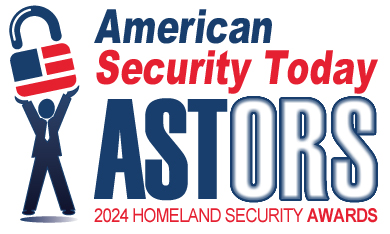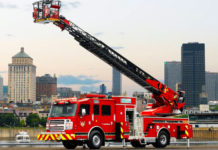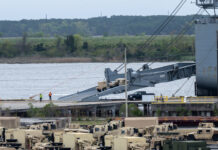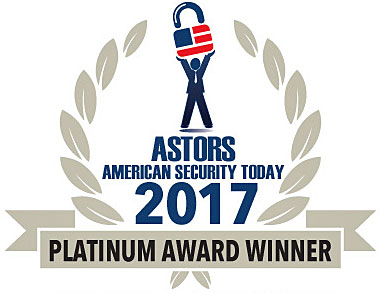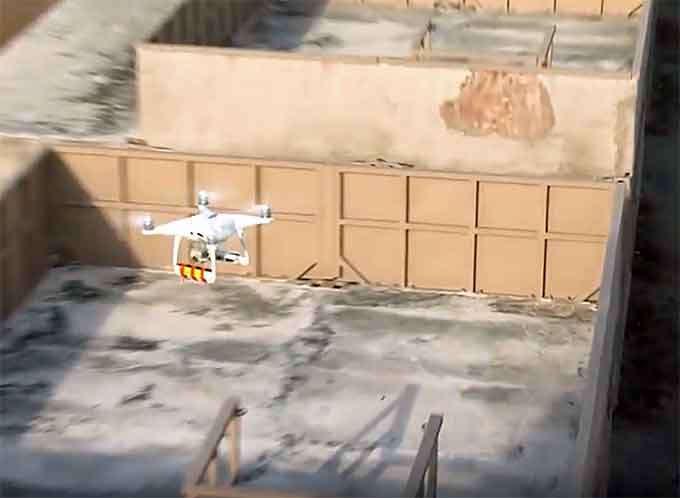
New technology can provide advances in the way we do things, expanding areas previously left unexplored and simplifying previously burdensome tasks.
This is true with advancements in Unmanned Aerial Systems (UAS), or drones.
There are global efforts focusing on using drone technology to improve and support our everyday lives, and the commercial market is offering increasingly small, relatively inexpensive and capable drones.
Given their rapid technology advancement and proliferation, the public safety and homeland security communities must address the fact that drones can be used nefariously or maliciously to hurt people, disrupt activities and damage infrastructure.
Testing in New Environments

Since 2016, the Department of Homeland Security (DHS) Science and Technology Directorate (S&T) has focused on developing and delivering counter-UAS (C-UAS) capability technical upgrades for DHS operating components with high priority needs.
S&T helps guide, advise and provide technical expertise to all components and Homeland Security Enterprise partners on the steps they can take, and available technology they can legally use to counter unwanted or malicious UAS.
Most CUAS systems are still legally prohibited from operating in the national airspace, however, DHS and the Department of Justice are seeking new legal authorities from Congress to use this evolving technology as part of certain missions.
As part of this work, S&T established a test and evaluation series, the Technical Assessment of Counter UAS Technologies in Cities (TACTIC), to assess the performance and suitability of commercial counter-UAS solutions in homeland security settings.

“There is a huge market of commercial counter UAS solutions out there,” explained S&T’s Program Executive for UAS, Anh Duong.
“But most – if not all of them – have not been subjected to testing in urban environments that are relevant to homeland security.”
“So to date there is very little real data on the performance of these systems in urban settings.”
In December 2017, DHS S&T’s National Urban Security Technology Laboratory (NUSTL), a 2017 ‘ASTORS’ Platinum Award Winner for Excellence in Homeland Security, executed the second part of the 2017 TACTIC for the Program Executive Office for UAS, in partnership with the Marine Corps Warfighting Laboratory, at the Urban Training Center located at Marine Corps Base Quantico in Virginia.
The mock city there allowed S&T to replicate environments that would be more relevant to homeland security operations.
Watch Video Now!
(Since 2016, the Department of Homeland Security (DHS) Science and Technology Directorate (S&T) has focused on developing and delivering counter-UAS (C-UAS) capability technical upgrades for DHS operating components with high priority needs. S&T helps guide, advise and provide technical expertise to all components and Homeland Security Enterprise partners on the steps they can take, and available technology they can legally use to counter unwanted or malicious UAS. Courtesy of DHS Science and Technology Directorate and YouTube. Posted on May 11, 2018)
Opportunities to Test Counter-UAS Systems
Nine C-UAS commercial solutions with varying types of sensors for detecting, tracking and identifying small UAS were evaluated in the week-long event.
TACTIC not only allowed S&T to assess the capabilities of these technologies and collect valuable data that will feed other tools used to advise DHS components, but it also provided an opportunity for developers to see their C-UAS technologies put into action under settings that are relevant to homeland security and obtain direct feedback from potential end-users.
“Assessments such as TACTIC provide government and industry with a better understanding of C-UAS technologies, and how we can work together to deliver solutions to DHS and first responders,” stated NUSTL Deputy Director Alice Hong.
“These assessments are key to ensuring systems meet the needs of technology end-users in the Homeland Security Enterprise.”
Informing Homeland Security Operators on C-UAS

an “Urban Canyon” during TACTIC (Courtesy of DHS S&T)
DHS operating components, as well as other federal, state, local, first responder organizations and international government representatives made up the approximately 100 observers at TACTIC.
Seeing firsthand how C-UAS technologies work in a replicated urban setting, while also learning the logistics and training requirements associated with various technologies, attendees walked away with knowledge that could inform future technology acquisition, operations, and training.
Among the visitors to the exercise was the White House Deputy Chief Technology Officer and Assistant to the President and staff from the White House Office of Science and Technology Policy, as well as S&T’s own Senior Officer Performing the Duties of Under Secretary for Science and Technology, Mr. William Bryan.
“We are especially pleased with the visit by senior leadership from the White House and DHS S&T, and grateful for the enthusiastic participation of our customers from the DHS operating components,” said Duong.
“Their presence underlined the importance of the counter-UAS mission and the impactful contribution that DHS S&T is making.”
Collecting UAS Data Efficiently
For any test and evaluation effort, data collection is paramount.
TACTIC requires a wealth of data—information collection from the test environment, C-UAS systems evaluation, and flight of the UAS.
To accomplish this, S&T funded the Stevens Institute of Technology to develop and outfit an Instrumentation Van (I-Van) that serves as a portable C-UAS data collector.
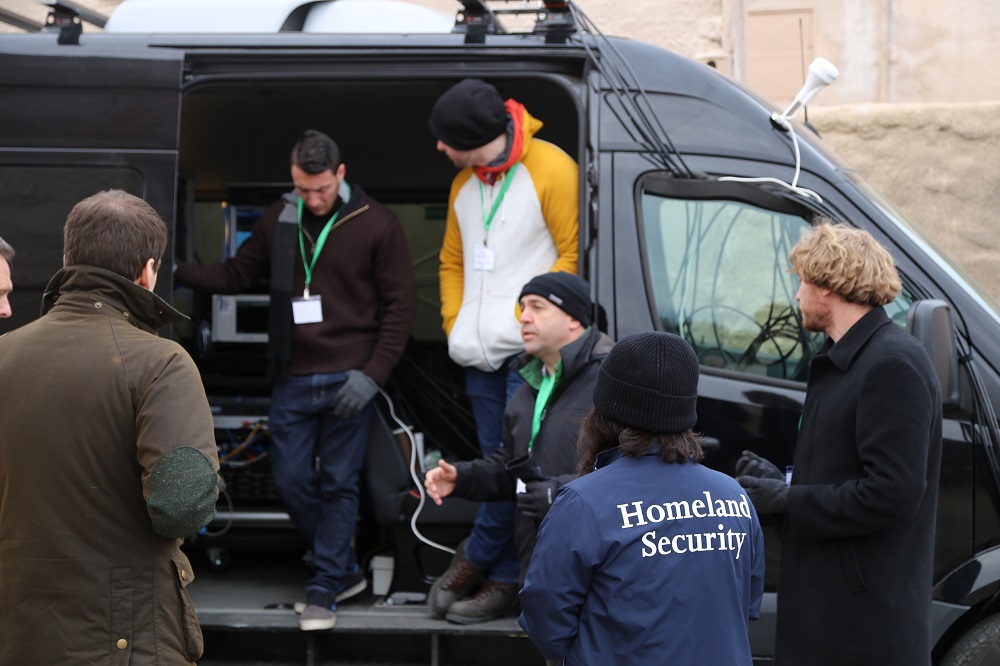
Loaded with equipment such as spectrum analyzers, GPS trackers, cameras, acoustic sensors, and weather devices, this instrumentation van is the first of its kind and enables highly efficient and accurate data collection.
Use of the I-Van is just one part of an effort to maximize efficiency through standardized data collection.
S&T is also pursuing common test methods and protocols among agencies and international partners to reduce costs and facilitate data sharing.
“We anticipate moving our testing from mock cities to real cities from time to time. We also hope to see more advanced counter UAS technologies,” Duong said of future TACTIC exercises.
While this TACTIC event didn’t evaluate mitigation techniques, Duong indicated it could be added in future events.
Evolving Security with Technology
“UAS technology is fast evolving. Drones are becoming very cheap and very capable. More to the point, the bad guys can even use 3-D printers to make drones.”
We can’t count on knowing every single drone, because it may not be bought commercially but privately built, Duong emphasized.
“So from our standpoint of being able to counter them, we have to be able to anticipate where the technology is going and therefore incubate countermeasures accordingly.”
Technology assessments, efficient data collection, and development of C-UAS tools support DHS operating components and partners in their quest to plan for and deploy the most effective capabilities against nefarious UAS that threaten the people and critical infrastructure of our nation.
DHS S&T Takes Four in The 2017 ‘ASTORS’ Homeland Security Awards Program
 The U.S. Department of Homeland Security Science (DHS) and Technology Directorate (S&T) was recognized last week with four ‘ASTORS’ ‘Excellence in Homeland Security’ Platinum Awards by American Security Today (AST), at the ISC East Conference in New York City to honor organizations that are actively addressing today’s evolving Homeland Security challenges in innovative ways.
The U.S. Department of Homeland Security Science (DHS) and Technology Directorate (S&T) was recognized last week with four ‘ASTORS’ ‘Excellence in Homeland Security’ Platinum Awards by American Security Today (AST), at the ISC East Conference in New York City to honor organizations that are actively addressing today’s evolving Homeland Security challenges in innovative ways.
-
Department of Homeland Security (DHS) Science and Technology Directorate (S&T)
- Enhanced Dynamic Geo-Social Environ (EDGE) Virtual Online Training for First Responders Open at No Cost to All U.S. First Responders Agencies, Across Disciplines for Coordinated Response to Critical Incidents
- Excellence in Homeland Security
-
Department of Homeland Security (DHS) Science and Technology Directorate (S&T)
- Resilient Tunnel Plug (RTP) to Strengthen Mass Transportation Critical Infrastructure from Disruptive Flood Events
- Excellence in Homeland Security
-
Department of Homeland Security (DHS) Science and Technology Directorate (S&T) First Responders Group (FRG)
- Flood Apex Program, Applying New & Emerging Technologies to Improve Community Resilience from Flood Disasters, Reduce Fatalities and Property Loss
- Excellence in Homeland Security
-
Department of Homeland Security (DHS) Science and Technology Directorate (S&T) Homeland Security Advanced Research Projects (HSARPA)
- Surface Transportation Explosives Threat Detection (STETD) on Developing the Capacity to Detect Potential Threat Items Throughout Rail and Subway Systems Without Alerting the Subject or Negatively Impacting the Speed of Travel
- Excellence in Homeland Security
AST focuses on Homeland Security and Public Safety Breaking News, the Newest Initiatives and Hottest Technologies in Physical & IT Security, essential to meeting today’s growing security challenges.

The Annual ‘ASTORS’ Homeland Security Awards Program, is organized to recognize the most distinguished vendors of Physical, IT, Port Security, Law Enforcement, Border Security, First Responders, (Fire, EMT, Military, Support Services Vets, SBA, Medical Tech) as well as the Federal, State, County and Municipal Government Agencies – to acknowledge their outstanding efforts to ‘Keep our Nation Secure, One City at a Time.’
To Learn More about the ‘ASTORS’ Homeland Security Awards Program, see 2017 ‘ASTORS’ Homeland Security Award Winners Honored at ISC East.
 Over 100 distinguished guests from National, State and Local Governments, and Industry Leading Corporate Executives from companies allied to Government, gathered from across North America and the Middle East to be honored from disciplines across the Security Industry in their respective fields which included:
Over 100 distinguished guests from National, State and Local Governments, and Industry Leading Corporate Executives from companies allied to Government, gathered from across North America and the Middle East to be honored from disciplines across the Security Industry in their respective fields which included:
- The Department of Homeland Security
- The Department of Justice
- The Security Exchange Commission
- State and Municipal Law Enforcement Agencies
- Leaders in Private Security


